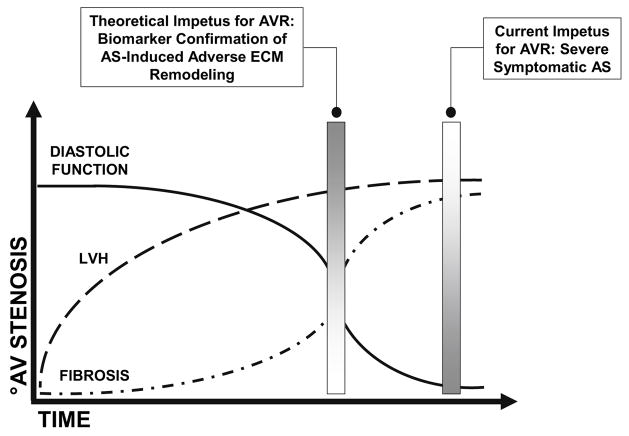Figure 3.
The hypothetical schematic depicts deterioration in diastolic function and an increase in myocyte hypertrophy and myocardial fibrosis over time and in the setting of AS-induced progressive pressure overload. Current management paradigms advocate AVR for patients with severe AS and associated symptoms, namely, angina, syncope, and chronic heart failure. However, AVR carried out only after symptom onset likely fails to reverse the maladaptive ECM remodeling that has already occurred. Identification of a biomarker capable of heralding the transition from AS-induced adaptive to maladaptive ECM remodeling processes may therapeutic value. Specifically, identification of such a biomarker may be used to direct more timely elimination of the pressure overload state thus optimizing the chances for normalization within the ECM and improved post-operative outcomes.

